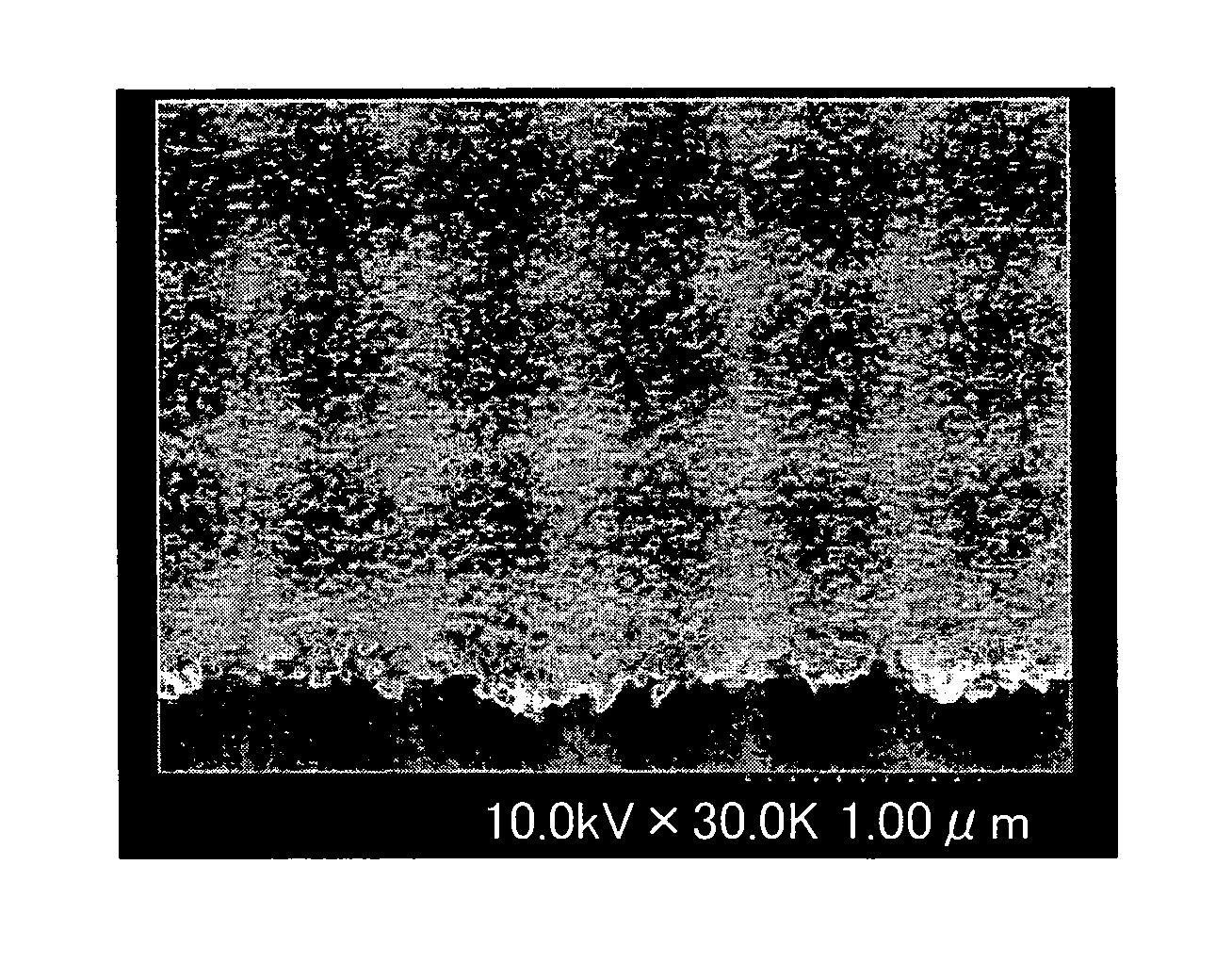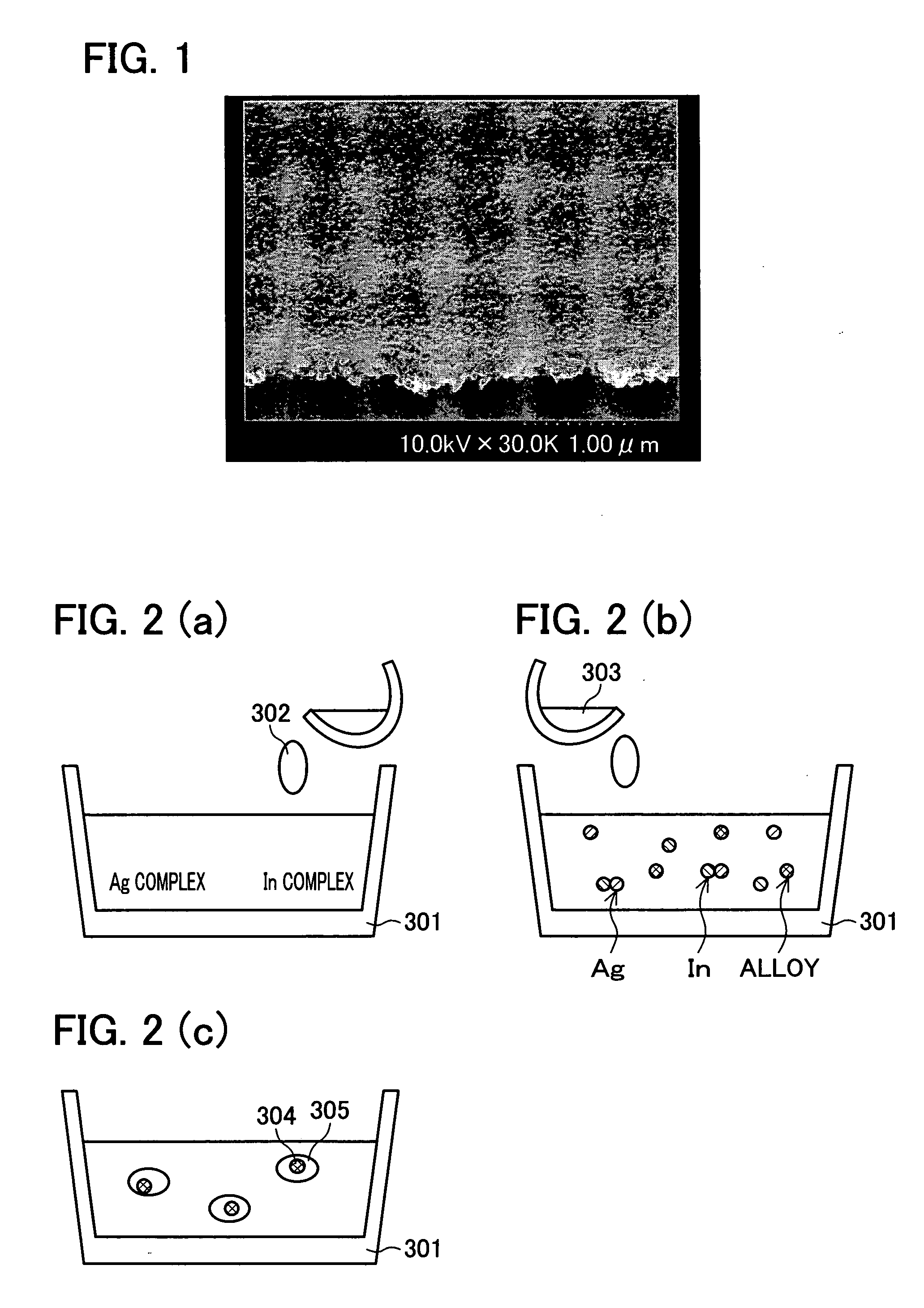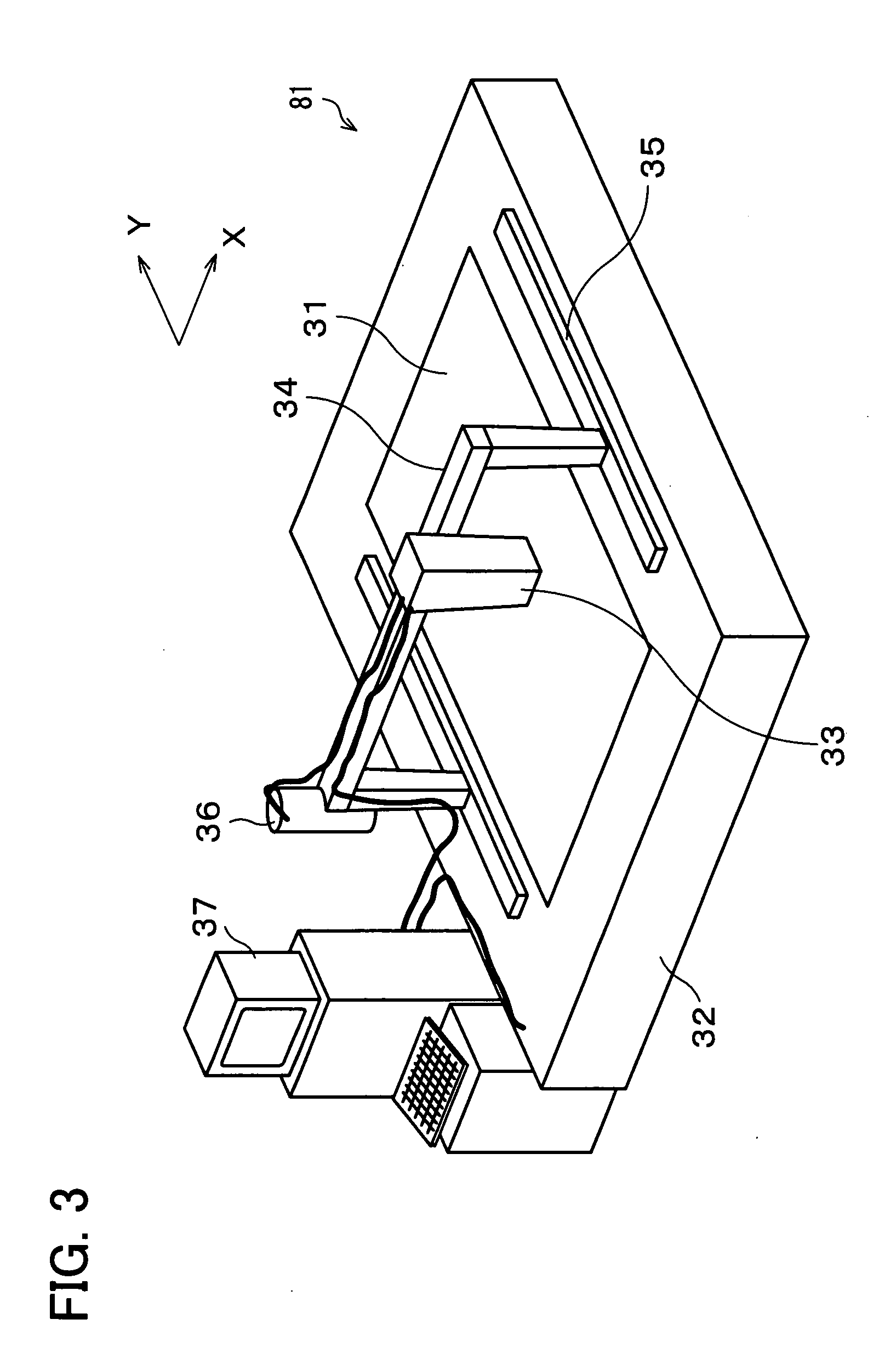Conductive ink composition, reflective member, circuit substrate, and electronic apparatus
a technology of reflective members and inks, applied in the direction of inks, natural mineral layered products, synthetic resin layered products, etc., can solve the problems of poor material efficiency, long manufacturing time, and high disposal costs, and achieve excellent surface smoothness, excellent surface smoothness, and improved adhesiveness to an application target
- Summary
- Abstract
- Description
- Claims
- Application Information
AI Technical Summary
Benefits of technology
Problems solved by technology
Method used
Image
Examples
example 1
[0338] (Hexanoic Acid+Docosanoic Acid+Octylamine)
[0339] A sodium borohydride-2-propanol solution was prepared by adding 15 mmol of sodium borohydride to 2-propanol; (550ml) and stirring the mixture for 3 hours at 80° C.
[0340] Meanwhile, a metallic salt solution was prepared by adding and dissolving, to 2,2,4-trimethylpentane (1.05L), (A) octylamine (150 mmol) as the amine, (B) hexanoic acid (68 mmol) and docosanoic acid (8 mmol) as carboxylic acids, and indium acetate (0.3 mmol) and silver acetate (15 mmol) which are metal compounds.
[0341] Thereafter, to the metallic salt solution, the sodium borchydride-2-propanol solution was dropped at a rate of 10 ml / min. After the dropping, the mixture was stirred for 60 minutes and then concentrated by an evaporator. As a result of this, a brown solution was obtained. Then methanol (1 L) was added to the brown solution, so that a conductive ink composition was generated as a brown precipitation. This precipitation was collected by suction f...
example 2
[0343] (Hexanoic Acid+Naphthenic Acid+Octylamine)
[0344] A silver-indium conductive ink was manufactured in the same conditions as in Example 1, except that docosanoic acid (8 mmol) as the carboxylic acids in (B) was replaced with naphthenic acid (2.025 g roughly equivalent to 8 mmol) whose average molecular mass was about 270, so that a film was formed on a non-alkali glass substrate. The film obtained as a result of the baking was 355 nm thick, and its volume resistivity was 9.8 μΩ·cm. The adhesiveness between the film and the substrate was good, i.e. passed the tape peel test. The rate of indium in the film was 1.0 atomic %. The center line average roughness Ra was 3.2 nm, indicating that the film was flat and smooth. Also, the shape of the film surface did not change after being exposed to an N2 gas atmosphere for 60 minutes at 300° C., i.e. the film exhibited excellent heat resistance. According to the measurement of the naphthenic acid by a GC (gas chromatography) / MS(mass spec...
example 3
[0345] (Hexanoic Acid+Octylamine)
[0346] A silver-indium conductive ink was manufactured in the same conditions as in Example 1, except that docosanoic acid was not added and an amount of the hexanoic acid was increased to 76 mmol (i.e. only the hexanoic acid was adopted as the carboxylic acids in (B)), so that a film was formed on a non-alkali glass substrate. The film obtained as a result of the baking was 508.1 nm thick, and its volume resistivity was 12.5 μΩ·cm. The rate of indium in the film was 0.1 atomic %, and the center line average roughness Ra was 38.2 nm. The adhesiveness between the film and the substrate and the smoothness and flatness of the surface were inferior to those of Examples 1 and 2, but the surface roughness of the film and the adhesiveness between the film and the substrate were still better than those of a conventional silver ink that uses silver as a simple substance.
PUM
| Property | Measurement | Unit |
|---|---|---|
| standard oxidation-reduction potential | aaaaa | aaaaa |
| standard oxidation-reduction potential | aaaaa | aaaaa |
| particle diameter | aaaaa | aaaaa |
Abstract
Description
Claims
Application Information
 Login to View More
Login to View More - R&D
- Intellectual Property
- Life Sciences
- Materials
- Tech Scout
- Unparalleled Data Quality
- Higher Quality Content
- 60% Fewer Hallucinations
Browse by: Latest US Patents, China's latest patents, Technical Efficacy Thesaurus, Application Domain, Technology Topic, Popular Technical Reports.
© 2025 PatSnap. All rights reserved.Legal|Privacy policy|Modern Slavery Act Transparency Statement|Sitemap|About US| Contact US: help@patsnap.com



